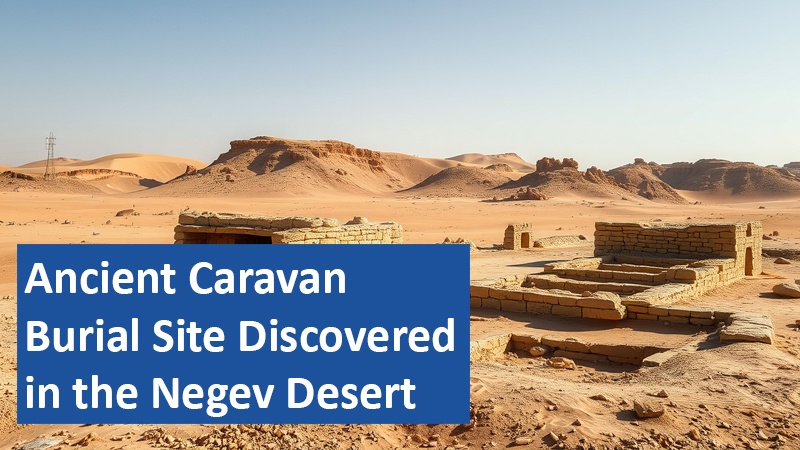 Archaeologists from the Israel Antiquities Authority (IAA) have uncovered ancient tombs near Tlalim Junction in the Negev Highlands. These discoveries suggest that the region was not merely a trade route but a thriving center for commercial and cultural exchange. The burial sites, containing various artifacts, provide new insights into the connections between ancient civilizations such as Yemen, Phoenicia, and Egypt.
Archaeologists from the Israel Antiquities Authority (IAA) have uncovered ancient tombs near Tlalim Junction in the Negev Highlands. These discoveries suggest that the region was not merely a trade route but a thriving center for commercial and cultural exchange. The burial sites, containing various artifacts, provide new insights into the connections between ancient civilizations such as Yemen, Phoenicia, and Egypt.
Exclusive Amazon discounts – shop now!
A Hub of Ancient Trade
Among the artifacts found in the tombs are flint arrowheads linked to Yemen and Oman, as well as copper and silver jewelry. The presence of alabaster vessels, likely used to transport incense, further supports the idea that the Negev was a key point in trade networks spanning the ancient world. Additionally, an amulet depicting the Egyptian god Bes submits connections to Egypt, emphasizing the region’s role in facilitating the exchange of luxury goods.
The Mystery of the Isolated Tombs
Unlike traditional burial sites located near settlements or fortresses, these tombs are in a remote area with no known nearby population centers. Researchers propose two theories: the site may have served as a long-term burial ground for passing caravans, or it could be a mass grave for traders who were ambushed along their journey. Historical records indicate that these trade routes carried valuable commodities such as frankincense and myrrh, and some sources suggest that enslaved individuals from regions including Egypt, Gaza, and Greece may also have been transported through the Negev.
Religious and Cultural Significance
One of the most intriguing aspects of the discovery is the concentration of flint artifacts, which are unparalleled in Israel. According to Dr. Jacob Vardi, a specialist in prehistoric tools, these arrowheads originate exclusively from Yemen and Oman. Some artifacts contain traces of red ochre, a substance historically used to symbolize blood and in ritualistic practices. This suggests that these objects may have held religious or ceremonial importance beyond their practical use.
Unlocking the Secrets of the Negev
The discovery of these caravan tombs provides significant insights into the extensive trade networks that connected distant civilizations over 2,500 years ago. The artifacts reveal the Negev’s role as a cultural and commercial hub rather than a mere passageway.
The discovery of the ancient caravan tombs in the Negev Desert sheds new light on the region’s role as a pivotal center of trade and cultural exchange over 2,500 years ago. These findings suggest that the Negev was more than just a passageway—it was a thriving hub connecting civilizations across the ancient world. Future excavations may reveal even more about the people who traveled these trade routes and the goods they transported.
What do you think this discovery tells us about ancient trade networks? Could there still be more hidden archaeological sites waiting to be uncovered in the Negev Desert? Share your thoughts in the comments!
Based on content from www.heritagedaily.com and own research.